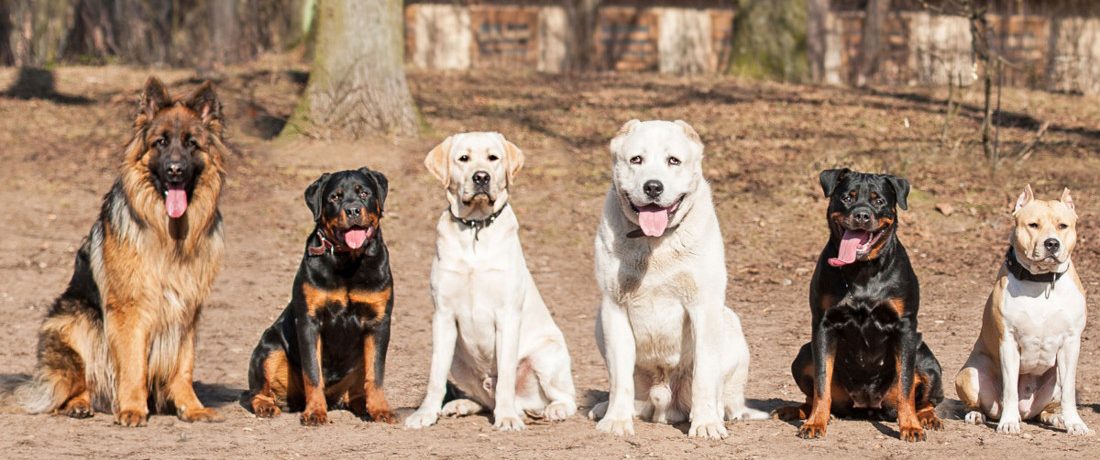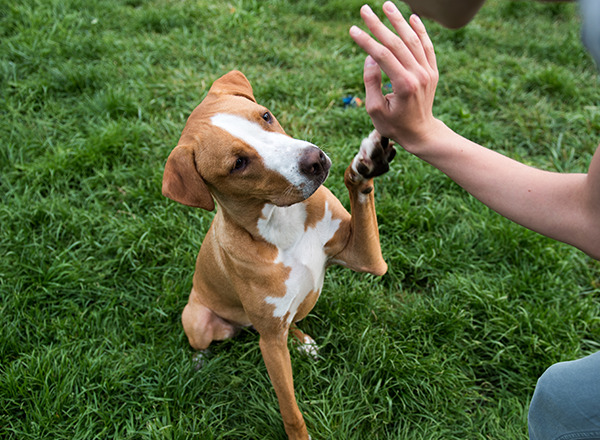The Advantages of Early Dog Training for a Mannerly Animal
The Advantages of Early Dog Training for a Mannerly Animal
Blog Article
Vital Tips for Effective Dog Training: A Guide for Pet Dog Owners
Reliable pet dog training is a diverse procedure that needs a calculated approach customized to both the animal's personality and the owner's objectives. Recognizing how to browse these obstacles can dramatically improve the training experience, ultimately changing the relationship in between owner and pet dog.
Understanding Canine Behavior
Comprehending dog actions is vital for reliable training and promoting an unified relationship in between canines and their owners. Pets interact mostly through body movement, articulations, and actions, making it critical for owners to translate these signals properly. Recognizing a pet dog's posture, tail setting, and ear alignment can give understandings into its emotion. For instance, a wagging tail does not always suggest joy; it can additionally signal exhilaration or anxiety.

Socializing plays a considerable duty in pet dog habits; exposure to various environments, people, and various other pets can substantially affect a canine's personality. Aspects such as breed attributes and individual temperament need to lead training methods, as some types might have details behavior characteristics that require customized techniques. By understanding these components, owners can develop a helpful environment that motivates positive habits, leading to effective training outcomes and a much deeper bond with their pets.
Establishing Regular Commands
Efficient interaction with your pet dog starts with establishing regular commands. This foundational component of training is important for cultivating understanding between you and your pet dog. Consistency in the commands you use makes sure that your dog can dependably associate certain words or phrases with the preferred behaviors.
When choosing commands, choose clear, unique words that are easy to claim and distinguish from one another. Prevent utilizing similar-sounding commands that might confuse your canine. As an example, using "sit" and "stay" is proper, yet "rest" and "hit" could lead to misconceptions.
In addition, preserve the same tone and quantity for each command. Canines are delicate to singing hints, so differing your tone can develop complication.
It is just as vital to make certain that all household members are on the very same web page relating to the commands used. A united front in command use will certainly avoid mixed signals and enhance the understanding procedure.
Positive Reinforcement Strategies
The power of positive reinforcement in canine training depends on its capability to motivate desired actions via rewards and praise. This strategy is grounded in the principle that behaviors complied with by desirable results are more probable to be repeated. By integrating positive support right into your training program, you can effectively shape your dog's habits in a positive manner.
To carry out positive reinforcement, it's essential to recognize what encourages your pet dog, whether it be deals with, toys, or spoken appreciation. When your canine executes a desired action, such as sitting on command, right away award them with a reward or love. This organization between the command and the favorable outcome enhances their understanding.
It's important to timing the benefits appropriately; providing the reinforcement within seconds of the desired actions aids your dog make the connection (dog training). In addition, uniformity is essential-- make certain that all member of the family utilize the very same commands and reward systems to avoid confusion

Slowly, you can website link lower the frequency of treats as your pet dog finds out the actions, transitioning to praise or intermittent benefits. This technique not just cultivates a solid bond in between you and your dog but also promotes a positive knowing atmosphere, making educating a delightful experience for both.
Socialization and Communication
Consistently exposing your dog to a variety of environments, people, and other animals is important for their social advancement. Socializing needs to start early, preferably throughout the critical home window of 3 to 14 weeks, when puppies are most receptive to new experiences. Nevertheless, older pet dogs can likewise gain from ongoing socialization initiatives.
Present your pet dog to different settings, such as parks, pet-friendly shops, and metropolitan locations. This exposure helps them adapt to various stimuli, reducing anxiety and concern reactions. Encourage favorable communications with other canines and individuals, making certain that these encounters are controlled and risk-free to cultivate confidence.
Utilize structured playdates with courteous pet dogs, as this can boost your dog's social abilities and instruct them suitable habits. Obedience courses and training sessions also give outstanding opportunities for socialization, allowing your canine to connect with others in a supervised environment.
Monitor your dog's body language during communications, as this will assist you determine their comfort degree. Progressively enhance direct exposure to even more difficult scenarios while ensuring that each experience declares. A well-socialized canine is more probable to display well balanced actions, making them a pleasure to have in any kind of setting.
Dealing With Usual Training Challenges
Every canine proprietor will certainly encounter training difficulties at some time, no matter their canine's age or socializing level. Identifying typical problems such as stubbornness, disturbances, and terror can aid in developing efficient methods for renovation.

Gradually present interruptions as the dog ends up being much more skillful in commands. Short, constant training sessions are also efficient in maintaining attention.
Terror can prevent a dog's understanding process. Steady desensitization to the source of concern, coupled with positive reinforcement, can help ease anxiety. Persistence is vital; never ever require a canine right into a scenario that causes distress, as this might exacerbate the concern.
Ultimately, understanding and dealing with these common difficulties with a structured method will promote an extra effective training experience, strengthening the bond in between pet dog and owner while advertising reliable knowing.
Conclusion
In summary, successful pet training counts on a detailed understanding of canine habits, the establishment of regular commands, and the application of positive support techniques. Socializing plays a vital role in creating well-adjusted pets, while resolving great post to read common training obstacles requires persistence and adaptability. By carrying out these important approaches, animal proprietors can foster a solid bond with their dogs and advertise desirable habits, eventually causing a harmonious connection in between humans and their canine buddies.
Comprehending pet behavior is necessary for reliable training and fostering a harmonious partnership in between dogs and their proprietors.Socialization plays a substantial role in dog actions; direct exposure to various environments, people, and various other pets can considerably influence a dog's personality.The power of favorable support in canine training lies in its ability to encourage desired actions with rewards and praise. By including favorable support into your training program, you can successfully form your canine's behavior in a constructive fashion.
In recap, effective pet training relies on an extensive understanding of canine habits, the facility of constant commands, and the application of positive support methods.
Report this page